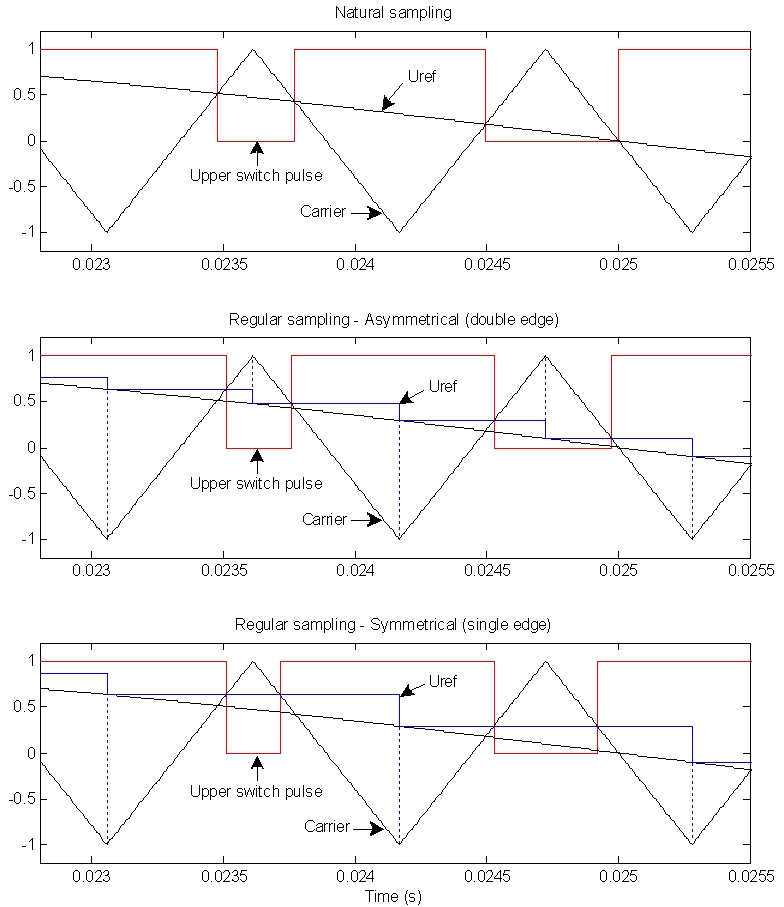PWM Generator (2-Level)
(To be removed) Generate pulses for PWM-controlled 2-level converter
The Specialized Power Systems library will be removed in R2026a. Use the Simscape™ Electrical™ blocks and functions instead. For more information on updating your models, see Upgrade Specialized Power System Models to use Simscape Electrical Blocks.
Libraries:
Simscape /
Electrical /
Specialized Power Systems /
Power Electronics /
Power Electronics Control
Description
The PWM Generator (2-Level) block generates pulses for carrier-based pulse width modulation (PWM) converters using two-level topology. The block can control switching devices (FETs, GTOs, or IGBTs) of three different converter types: single-phase half-bridge (1 arm), single-phase full-bridge (2 arms), or three-phase bridge (3 arms).
The reference signal (Uref input), also called modulating signal, is compared with a symmetrical triangle carrier. When the reference signal is greater than the carrier, the pulse for the upper switching device is high (1), and the pulse for the lower device is low (0).
To control a single-phase full-bridge device, you can select unipolar or bipolar PWM modulation. Using the unipolar modulation, each arm is controlled independently. A second reference signal is internally generated by phase-shifting the original reference signal by 180 degrees. Using the bipolar modulation, the state of the lower switching device of the second arm is the same as the state of the upper switch of the first arm, and the state of the upper switch of the second arm is the same as the state of the lower switch of the first arm. The unipolar modulation produces better quality AC waveform, but the bipolar modulation produces very low-varying common-mode voltage.
The figure describes the three techniques to sample the reference signal Uref. The natural sampling technique models the behavior of an analog implementation of a PWM generator. Using the two regular sampling techniques, Uref can be sampled twice at both the valley and the peak of the carrier or only once at the valley of the carrier. The former is referred to as asymmetrical sampling or double-edge technique. The latter is called symmetrical sampling or single-edge technique.
Reference Signal Sampling Techniques

Ports
Input
Output
Parameters
Extended Capabilities
Version History
Introduced in R2013a
